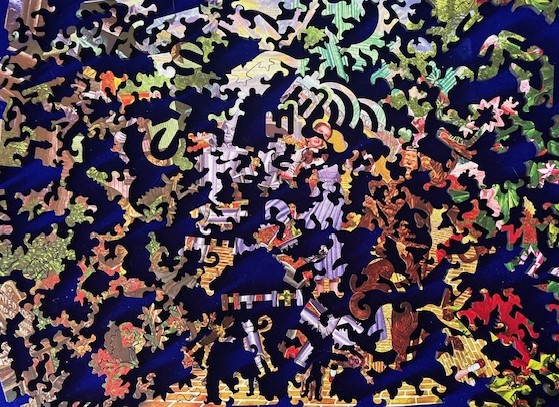
Broken Glass: Shards and Shattering Expectations
I first wish to set the stage by identifying each of the 12 realities proposed by Jim Vandehei—for the occupants of Oz are likely to be living in one of these realities. While Vandehei focuses on the ways in which media shapes reality, I would add in the power of social exchange within specific groups that are often age-related or built around ethnic, racial or religious identities. In recent years, these social exchange networks are often built around what Robert Bellah and his colleagues have identified as “life-style enclaves” (Bellah, et al, 1985. I would suggest that in mid-21st Century life these enclaves can be found among people who live near each other in a community, occasionally gather together, or stay connected through digital modes of communication).
The first group (shard) identified by Vandehei is named after Elon Musk the powerful renegade entrepreneur. The Musk-eteers are a fast-growing, mostly male group of young adulthood and middle age. They lean toward the innovative idea and produce—but are often indiscrete in their leanings. Their primary media outlet is (of course) Twitter. They also love podcasts and the work of independent reporters who use social media and digital newsletters to appear nontraditional (like their hero Elon Musk). This first group is clearly the produce of mid-21st Century life.
Instagrammers are Vandehei’s second shard. Vandehei suggests that this group is made up mostly of young to middle-aged women in college and the professional class. I would suggest that members of this group love to connect with other people. They tend to form digital enclaves, and are actively engaged with visual forms of digital journalism. Vanhehei notes that the Instagrammers tend to gravitate toward influential voices in the creator economy (an economy that allows many people to create their own product or service that can readily be marketed on the Internet).
Vandehei’s third group are the TikTok kids. His nomination of children as a separate group is an acknowledgement that children play an important role in the creation of 21s Century reality. Apparently, most children (who do not live in poverty) obtain much of their information about the world not from their parents or peers—but from TikTok and other digital sources that provide easily assimilated content. As rapid consumers of information, these kids with dexterous thumbs scroll rapidly through pictures and microbursts of information.
Vandehei’s fourth and fifth shard move to the other end of the age spectrum. The fourth consists of “new-age grandmas” who are likely to rely on Facebook (as their offsprings did several years ago). However, the “new” facebook is less likely to convey news and is now more likely to provide these digital grandmas with pictures of their grandkids, brief video snippets of dogs doing outrageous things, or masterful photographs of birds in flight or lovely sunsets.





